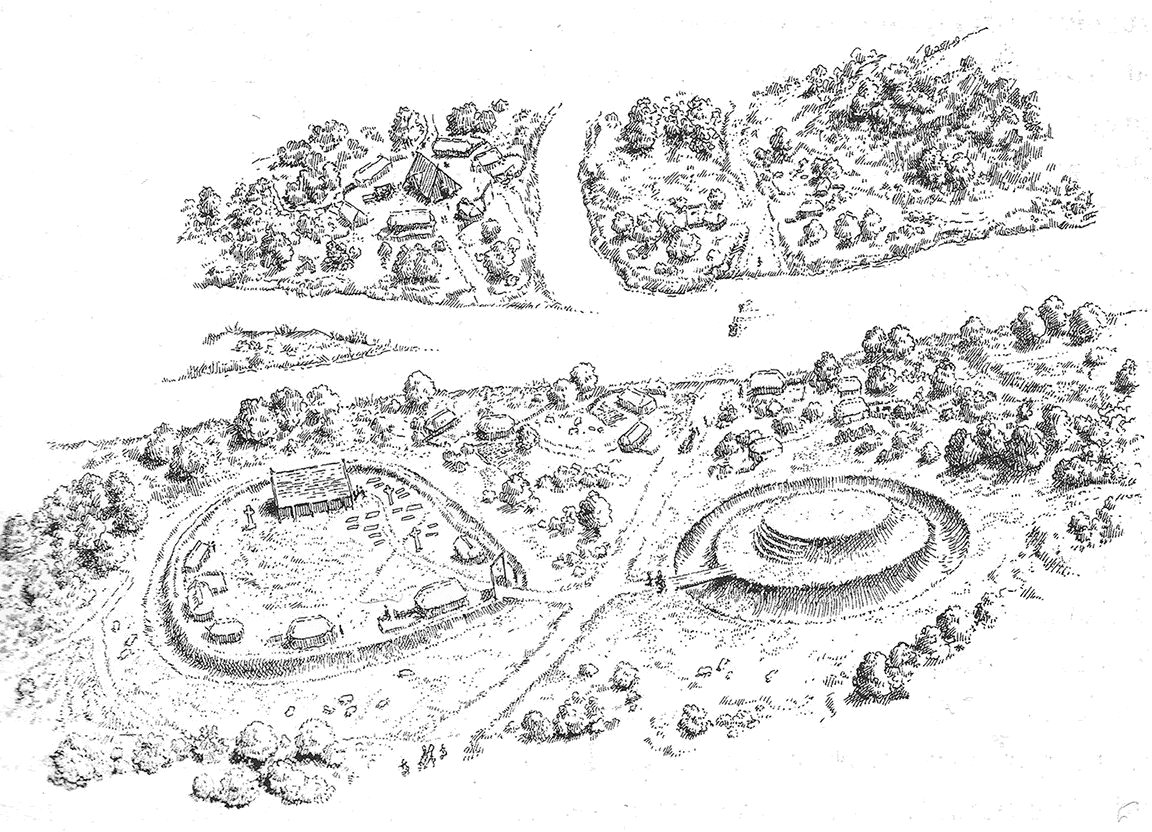Medieval Govan
The popular tradition of Govan’s medieval origin lies with Saint Constantine, said to be a 6th century Brittonic King of Cornwall who gave up his throne to become a monk and later founded a small wooden church or monastery at Govan; after martyrdom in Kintyre it is said that St. Constantine's body was brought back to the church at Govan to be buried. His feast day is the 11th March and he is regarded by some as Scotland’s first Christian martyr. There is indeed archaeological evidence of Christian burials at the church in Govan from the 5th or 6th century; however, there is much confusion and debate over the identity of Govan's St. Constantine, numerous St. Constantines and the popularity of 4th century Roman Emperor Constantine I (himself a saint), whose name was very popular among Christians makes it almost impossible to identify the root of Govan’s St. Constantine with any certainty.
The Life of Kentigern (St. Mungo) written for the bishop of Glasgow in the 12th century, describes that the 6th century King of Alt Clut, Rydderech Hael and his wife Langueth lived in a royal residence at Pertnech (Partick), they are the King and Queen in the story behind Glasgow’s coat of arms, the river Clyde was fordable between Govan and Partick and we can imagine that the church at Govan dedicated to St Constantine served the religious needs of this royal household at Partick.

Depiction of Saint Constantine of Govan.
In 870 Clyde Britons power base at Alt Clut was besieged for four months by Vikings from Dublin, the Clyde Britons under King Artgal were defeated and taken as slaves to Dublin, it is then said that King Artgal was killed in Dublin in 872. It had long been accepted the Kingdom of the Clyde Britons had ceased to exist with the attack on Alt Clut in 870. However, there are many who now challenge these former theories and argue that instead the Kingdom continued to be a powerful influence between the 9th - 11th century and at the heart of this Kingdom was Govan.
The Clyde Britons power base had shifted up river to Govan and Partick, this successor kingdom was known as Strathclyde and sometimes referred to as the Kingdom of Cumbria, its first King is thought to be Rhun, son of Artgal. Standing testament to the continuation of the Clyde Briton dynasty through the Kingdom of Strathclyde are the fine collection of medieval stones and sarcophagus carved between c870 to c1100 at Govan, Doomster Hill which stood at Water Row until the 1850s was also visible proof of the importance of Govan in the Kingdom of Strathclyde.

Reconstruction of Govan and Partick c AD1000. Shows the royal estate at Partick, and the church and Doomster Hill at Govan. Photo: © Chris Brown.
By 1050 the power of the Kingdom was diminishing greatly and by the end of the 11th century had fully fallen to the Kingdom of Alba (Scotland) and in 1107 we find Scots King Alexander I gifting Strathclyde to his brother David who was known as the “Prince of the Cumbrians”, later as King David I, he gifted the lands of Govan (including Partick) to Glasgow Cathedral, later the church at Govan (including Partick) was made a prebend of Glasgow Cathedral, this is why Govan Parish spanned both sides of the river. This revised medieval history is exciting and vibrant in contrast to the almost barren formerly accepted history of early medieval Govan.

Discovered in 1855 buried in the church graveyard, the sarcophagus is thought to have contained the remains of St. Constantine or a King of Strathclyde.